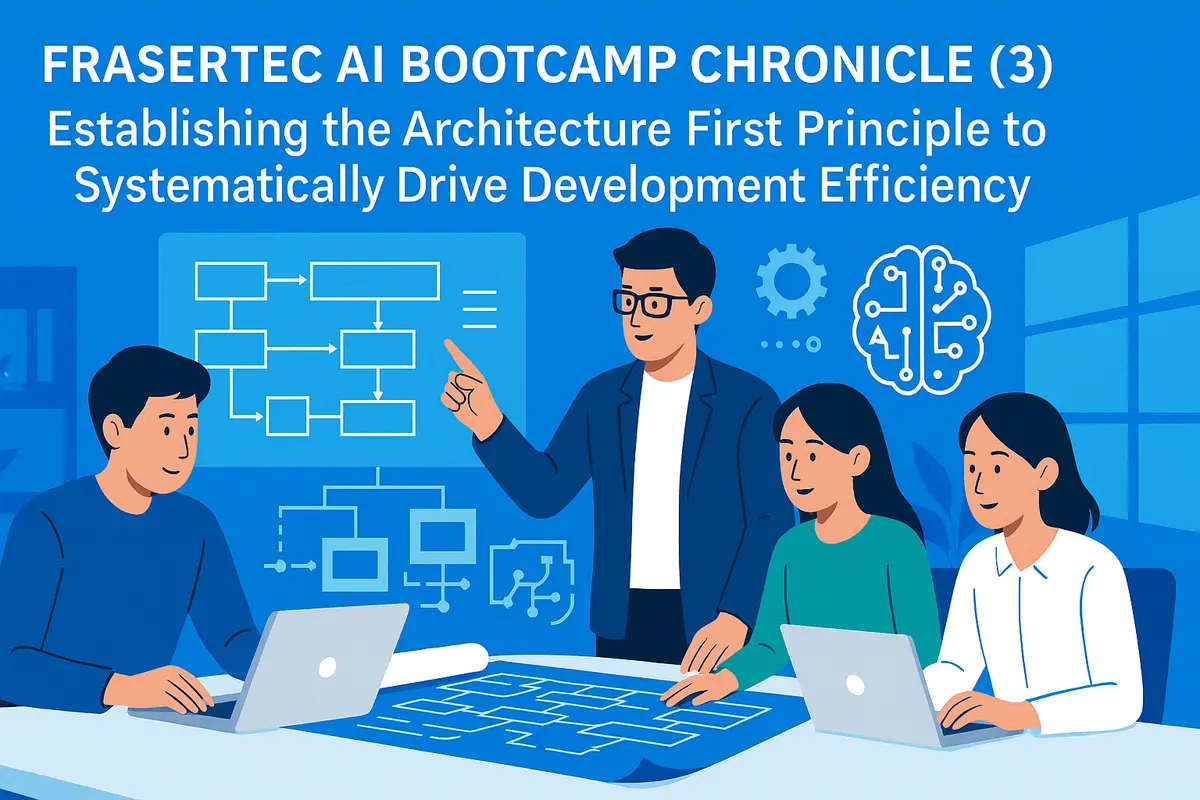
Frasertec AI Bootcamp Chronicle (3): Establishing the "Architecture First" Principle to Systematically Drive Development Efficiency
In [AI Bootcamp Chronicles (Part 1)], we experienced the astonishing speed brought by AI; in [Chronicles (Part 2)], we learned how to harness this power through precise instructions. As we reached the final two days of the Bootcamp, we faced the ultimate challenge: how to apply this new collaborative model to the most complex and core business functions of the entire system, ensuring the final product is a seamlessly integrated, robust, and reliable whole—not just a collection of disjointed features?
From "Code Islands" to "Development Blueprint"
Our initial approach was to break down complex functionalities and have different engineers guide AI to complete each module separately. Soon, a problem emerged: each AI-generated module appeared nearly flawless in isolation, but when we attempted integration, we discovered subtle discrepancies in "interfaces" and data formats—like isolated "code islands" unable to communicate.
This minor setback led us to the most pivotal and valuable discovery of the entire Bootcamp—the Architecture-First Principle.
We realized that AI is like an ultra-efficient construction crew, but they need a clear architectural blueprint. Without it, asking them to build walls or lay floors separately would inevitably result in mismatched components.
Thus, the role of senior engineers evolved from mere "instruction givers" to true "system architects." Their most critical task was no longer telling AI how to "lay each brick" but drafting the grand blueprint before construction began.
Practicing the Architecture-First Principle
Establishing this principle transformed our workflow. It perfectly aligned with the philosophy emphasized in About Frasertec Limited—that deep "understanding" of client needs must precede professional, comprehensive solutions. Specifically, we adopted three key strategies:
-
Blueprint First
Before writing a single line of functional code, our architects defined the system's database structure, module divisions, and communication protocols (APIs). This "development blueprint" became the single source of truth for the entire team (including AI). -
Decomposition with Interfaces
With the blueprint in place, we decomposed complex tasks into standardized "interfaces." Instructions to AI shifted from "build a user system" to "create a user registration feature compliant with User-API v1.2 per the blueprint." This granularity drastically improved the accuracy and consistency of AI-generated code. -
Building a Reusable Library
We compiled validated "instruction + blueprint fragment" combinations that yielded high-quality code into an internal reusable module library. For future similar needs, we could directly reuse these, achieving exponential efficiency gains.
Conclusion: From Tool Usage to a Philosophy of Development
The six-day AI Bootcamp has concluded, but its impact is just beginning. What we gained was not just technical proficiency with AI tools but a battle-tested development philosophy.
By embracing the Architecture-First Principle, we successfully combined AI's staggering speed with senior engineers' rigor, striking the optimal balance between stability and efficiency.
Frasertec Limited has fully integrated this rigorous, professional, and efficient workflow into our AI Rapid Development Service. We promise that every system delivered to our clients is not just hastily assembled code but a meticulously designed, reliable partner—crafted from the blueprint stage to blend innovative speed with professional quality.
Want to learn more about our AI development services?
Chat with us on WhatsApp